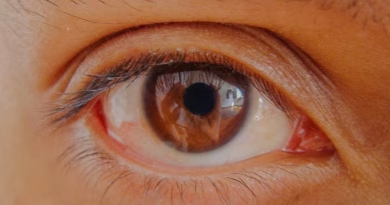Planning for the unknown: How to harness the power of predictive thinking
It’s fun to read articles about science fiction novels that predict the future with sometimes unsettling accuracy. We can look back and wonder how these authors prophesized a world they would sometimes never be around to see. But this is easy in retrospect: We have the unique ability to see, through the author’s enduring writing, what they thought would happen and compare it to how things transpired.
But what do we do with this potentially predictive information when people try to imagine the future today?
This was what I considered as I glimpsed into the minds of some of today’s technology giants as part of a research project on radical life extension technologies. These stakeholders re present some of the greatest thinkers in longevity science, and they have some bold predictions about what the world will look like when we live to be 150 or older.
present some of the greatest thinkers in longevity science, and they have some bold predictions about what the world will look like when we live to be 150 or older.
Some of these views are overwhelmingly positive. Even though they do not know exactly what form this breakthrough will take, they speak of futures in which everyone has access to the cutting-edge technology that will allow us to live longer and healthier lives. New technology that doesn’t only slow the aging process down, but it actually makes you younger.
They envision a long, rich life in which you can explore different careers, get multiple terminal degrees, and even push the capabilities of the human body by doing presently unimaginable activities like surf waves in Antarctica that are hundreds of feet.
Some interviewees envision a darker future, speaking of resource allocation issues in which we “overpopulate the planet and pollute ourselves out of existence,” or worry that social and evolutionary progress will halt without the benefit of generational turnover. Others warn of a future in which our lives are indeed longer, but the added years are spent in suffering decline; a preference for quantity of years over quality of life.
Of course, there is also the nagging concern that the inequality that already pervades our society will worsen. As one transhumanist politician stated, “we simply cannot leave everybody behind and expect anything other than dystopia.”
With so many possible outcomes, it’s easy to wonder if we will only be able to realize the truth and value in these imaginings when the future they predict has already become reality. But will that be too late?
Even in the best possible scenario, in which there is no exacerbated inequality or decades spent in expensive and debilitating illness in the pursuit of added years, the possibility of longer life raises questions about how we structure our life course – especially our current ideas about retirement – and how we can meaningfully change our social structure to integrate multiple generations into society.
And if the more dystopian predictions are true instead, can we preempt the worst possible outcomes before they have a chance to become reality?
We may be able to take some lessons from surprising sources. For example, companies like Apple engage in a process called design thinking, which allows them to design new and innovative products when they don’t know what to build. This is a twofold process, in which engineers and designers actively seek out previously unknown problems then prototype ways to address it. This method allows companies like Apple to design the future instead of waiting for it to come.
Organizations like Ford and NATO take it a step further by actively hiring authors of speculative fiction. Here emerges a mutually beneficial partnership in which authors who already work to imagine the future can consult for groups who financially and strategically benefit from just such predictions.
In other words, many companies and organizations already recognize that a glimpse into the future can mean staying ahead of the competition or helping create the future instead of waiting for it to arrive.
There is value, financial and otherwise, in seriously considering a future that has not yet come to pass. We do not have to wait for the future to act, but can instead think critically and imaginatively about its many possible forms and use it to start a dialog today.
This kind of thinking allows us to maximize the best possible outcomes and minimize the potential for serious harm – often to our benefit. No matter what you think the future will look like, the best thing to do is to continue imagining the dizzying array of possibilities. Because if we can imagine it, we’ll be ready when it comes.
-By Leah Fowler, J.D., health policy program manager in the Center for Medical Ethics and Health Policy at Baylor College of Medicine



